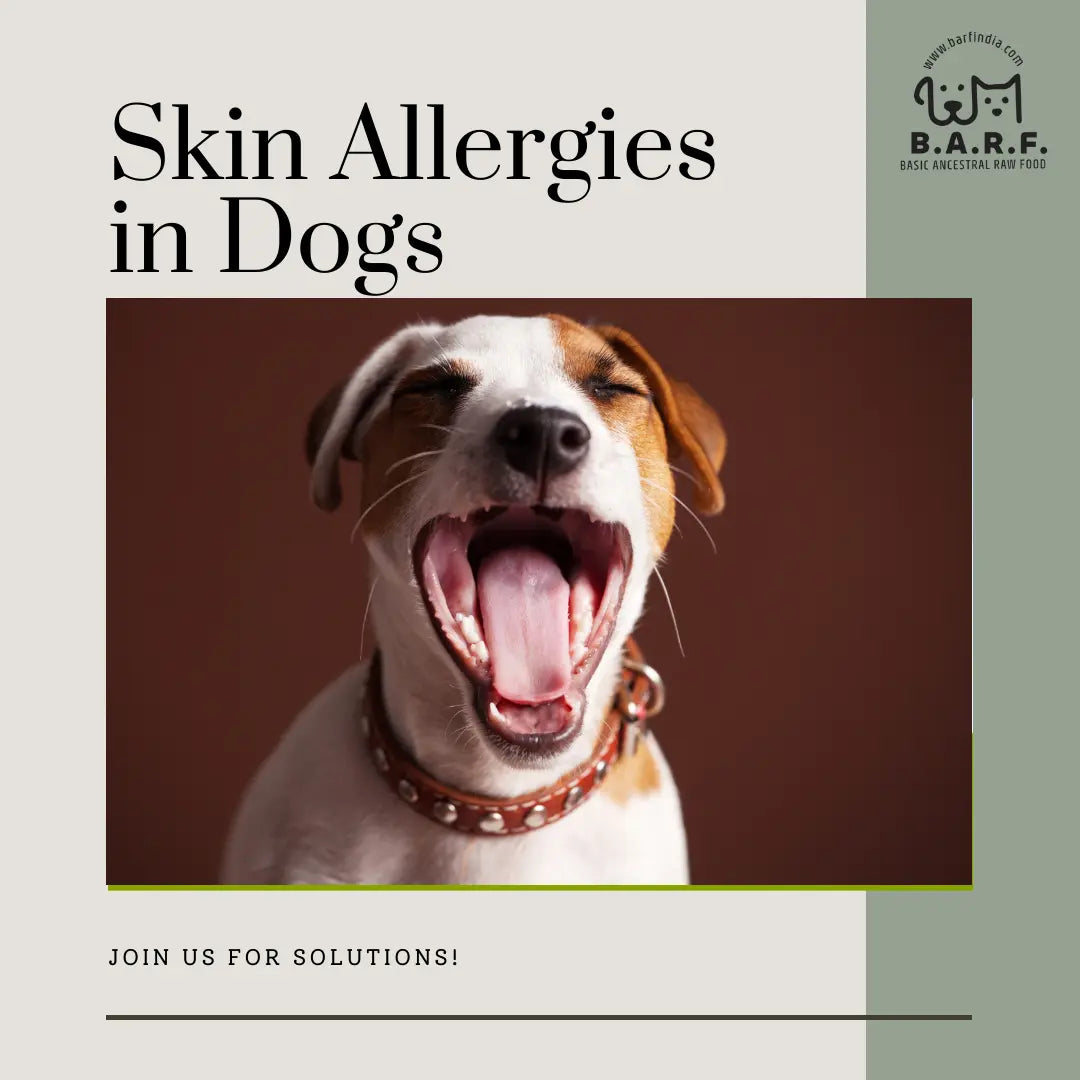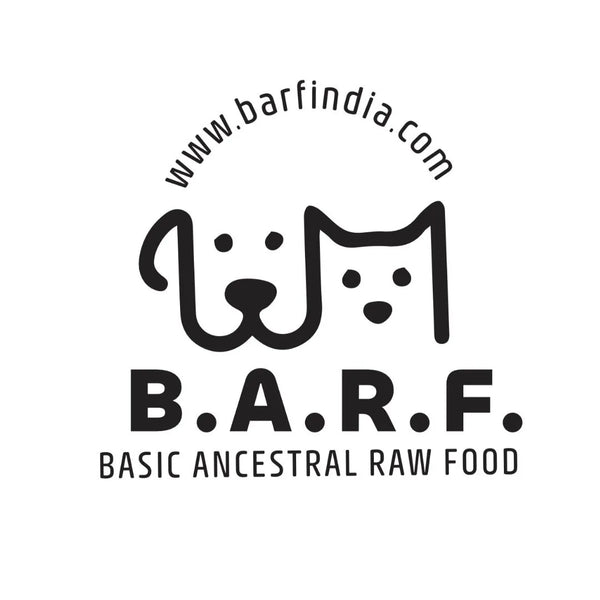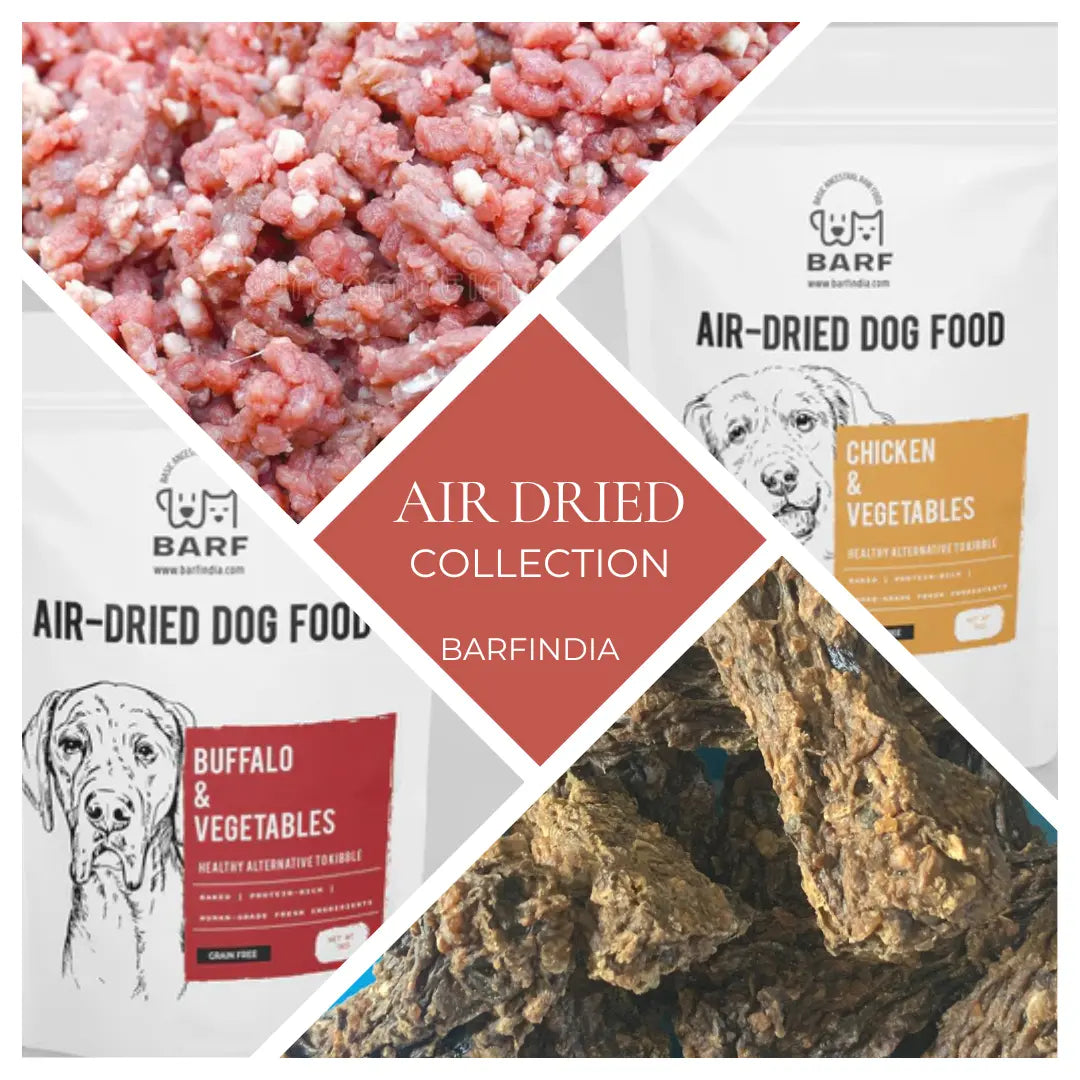
Skin Allergies in Dogs: Causes, Symptoms & the Best Natural Treatments
Nivedita FernandesSkin Allergies in Dogs: Signs, Causes & Natural Relief That Actually Works
Skin Allergies in Dogs are more common than most pet parents realize. If your dog has been scratching nonstop, chewing their paws, or rubbing their face into the furniture, it could be more than just a harmless itch—it might be an allergic reaction.
Skin allergies in dogs can cause serious discomfort and affect their overall quality of life. As devoted pet parents, it’s heartbreaking to watch our dogs suffer without knowing the cause. The good news? You don’t have to feel helpless. In this guide, we’ll break down the common triggers behind skin allergies and share natural, effective ways to soothe your dog’s symptoms and help them feel like their playful self again.
What Are Skin Allergies in dogs, Really?
Allergies in dogs happen when their immune system goes into overdrive over something pretty harmless—like pollen, certain foods, dust mites, or even flea saliva. The result? Constant scratching, skin redness, ear infections, and sometimes tummy upsets too.
Dog allergies aren't always easy to spot. Symptoms often mimic other conditions, which is why paying close attention to your dog’s behaviour is key.
Common Symptoms of Dog Allergies
Look out for these signs:
- Intense scratching and licking (especially paws, ears, and belly)
- Red, inflamed, or flaky skin
- Chronic ear infections
- Watery eyes or frequent sneezing
- Hair loss or bald patches
- Gastrointestinal issues like vomiting or diarrhea
Remember: The symptoms might vary based on what kind of allergy your dog has—environmental, food-related, or contact-based.
Can Dogs Have Allergies?
Yes, dogs can absolutely have allergies—just like humans. These allergies can stem from food, the environment, or even flea bites. Recognising and managing them early can prevent discomfort and more serious health issues down the road.
Types of Allergies in Dogs
1. Environmental Allergies
Think pollen, mold, grass, dust mites—basically, the stuff that floats around us every day. These allergies often peak during certain seasons and are also called atopic dermatitis.
2. Food Allergies
Some dogs develop sensitivities to common ingredients like chicken, beef, corn, wheat, or soy. Food allergies usually cause both skin and digestive symptoms. If your dog suddenly reacts to a food they've been eating for years, it could be a sign.
3. Flea Allergy Dermatitis
Even a single flea bite can cause an allergic reaction in some dogs. The saliva triggers intense itching and irritation, especially around the tail and back.
4. Contact Allergies
These are rare but can occur when your dog comes in direct contact with things like certain shampoos, synthetic fabrics, cleaning products, or even certain types of grass.
Diagnosis: How Vets Identify Allergies
Most vets will do a physical exam, ask about symptoms, and may recommend:
- Elimination diet trials (for suspected food allergies)
- Intradermal skin testing (often used for environmental allergies)
- Blood tests for allergens
It helps to keep a diary of your dog’s symptoms, including food, environment, and changes in behaviour. This info can really help your vet pinpoint the cause.
How to Treat Skin Allergies in Dogs
Treating dog skin allergies starts with identifying the root cause. Depending on the allergy type, your vet may suggest topical treatments, dietary changes, or lifestyle modifications. Many pet parents also turn to natural products and food-based solutions to manage symptoms long term.
What Can I Give My Dog for Allergies?
Always consult your vet first, but here are some common remedies:
- Omega-3 supplements for inflammation
- Herbal allergy chews (like chamomile or turmeric-based)
- Raw or gently cooked food diets
- Hypoallergenic shampoos
- Antihistamines (under vet guidance)
How Can I Help My Dog with Allergies?
We’re all for gentle, long-term solutions. Here’s what’s worked for many of our BARF India customers looking for the best dog food for skin allergies and holistic dog allergy treatment:
🐾 1. Switch to the Best Dog Food for Skin Allergies
Processed food often contains common allergens and hidden irritants. Switching to a raw or gently cooked, species-appropriate diet helps remove these triggers. Many pet parents see drastic improvements just by cleaning up the diet.
Check out our Skin & Coat Bundle – it’s been specially curated for dogs with allergy-prone skin.
🐟 2. Add Omega-3s for Anti-Inflammatory Support
Omega-3 fatty acids help reduce inflammation from the inside out. They soothe itchy skin, support gut health, and even boost immunity.
Try our bestselling Omega-3 Sprinkles or Fish Meal Toppers – real, clean ingredients with zero junk.
🌿 3. Herbal Relief for Itchy Skin
Natural supplements like turmeric, nettle, and chamomile can ease allergy symptoms and support detoxification. These herbs have been used in traditional medicine for centuries to calm irritated skin and boost immune response.
Stay tuned—our Herbal Allergy Relief Chews are launching soon!
🛁 4. Gentle, Natural Bathing Routine
Use a mild, chemical-free shampoo designed for sensitive skin. Avoid frequent bathing, though—it can strip your dog’s natural oils. Once every two weeks is usually plenty unless otherwise directed by your vet.
(Coming soon on Barf India: our all-natural oatmeal shampoo!)
🧼 5. Keep Their Environment Clean
- Wash their bedding weekly with a mild, unscented detergent
- Vacuum regularly to remove dust mites and dander
- Use air purifiers if possible
- Wipe your dog’s paws after walks to remove allergens
When Should You See a Vet?
If your dog’s symptoms persist or worsen, consult your vet. Especially if they show signs of:
- Open sores or bleeding
- Secondary infections (oozing skin, foul odor)
- Constant ear infections
- Weight loss or severe GI issues
Early intervention is key to avoid chronic discomfort.
FAQs: You Asked, We Answered
Q: Can dogs grow out of allergies?
A: Some puppies grow out of certain food sensitivities, but environmental allergies are often lifelong and need management.
Q: Are certain breeds more prone to allergies?
A: Yes! Breeds like Bulldogs, Retrievers, German Shepherds, and Pugs are more prone to skin allergies.
Q: Are raw diets really better for allergic dogs?
A: For many dogs, yes. Raw diets eliminate common allergens found in kibble and improve overall gut and skin health. Just ensure it’s nutritionally balanced.
Q: How long before I see results after changing their diet?
A: Most pet parents notice changes within 4–6 weeks, but some may take up to 8 weeks depending on the severity of the allergy.
Final Thoughts: You Know Your Dog Best
Allergies are tricky, and there’s no one-size-fits-all fix. But with a little observation, the right diet, and natural skin-loving products, you can help your dog live a more comfortable, itch-free life.
At BARF India, we believe healing starts with food. Every recipe, supplement, and product is crafted to support your dog’s health from the inside out.
Explore our full range of skin and allergy support products here.
Your dog deserves to feel good—in their skin and in their soul.



